Preface 2023
When I was 17 years old, from 1990 to ‘91, I had the great fortune of spending a year as a high school exchange student in Mexico. At that time, I had kept fish for years, and had a particular interest in livebearers. Indeed, this interest was a key motivation for choosing to go to Mexico. A few years later, from 1994 to ‘95, I was able to return to Mexico for another seven months. During both these stays, I was lucky to accompany Mexican researchers and aquarists on field trips to the habitats of a wide range of Mexican fish species. I was also allowed to contribute as a volunteer in the fishkeeping at the Faculty of Biology of the Autonomous University of Nuevo Leon.
Now, having recently turned 50, I am looking back with enormous gratitude at the life- and careershaping friendships and experiences I acquired during these stays in Mexico. However, I also feel great sadness over the fact that so many of the habitats and species we observed have since disappeared. Some of the species still exist in captivity, but too many are forever lost.
In the late ’90-ies I wrote a series of articles about my experiences in Mexico. These were published in Norwegian in the Poecilia Scandinavia magazine “Poeciliabladet”. The article below has been auto-translated to be available for a wider audience on this website. A big thank you to Marketa for the interest and assistance. I hope you find this information useful!
The fate of the northern platyfish
(originally published in 1995)
An oasis in the desert
During my stays in Mexico, I have lived most of the time in the city of Monterrey, which is the capital of the state of Nuevo León. The city is located in the northeast part of the country, on a valley plain between the steep mountains of the eastern Sierra Madre mountain range. The city was founded in 1579 by Spanish colonists. They founded the city in this place because there was water here in large quantities. Natural springs and streams from the mountains made this plain an oasis compared to the dry desert areas that surround it.
Expanding metropolis
Today (1995), Monterrey is a large city with 3-4 million inhabitants. The city is an important industrial centre, and its location close to the United States makes it attractive for national and foreign companies. For this reason, more and more people are flocking to the city, which is constantly expanding beyond the former plains and up the mountain sides. According to forecasts, the city’s population will double by 2010.
In this former oasis in the desert, there is one problem that is becoming increasingly apparent, namely water scarcity. Most of the existing water sources have been piped or dried up. One now has to drill 200 meters down to find groundwater!
To remedy the problem, large dams are being built to collect the water that falls in the mountains, with major ecological and economic consequences for the areas below the dams. Such short-term solutions contribute to delaying, and possibly intensifying, the problems that will result from water consumption over a long period of time being higher than the natural supply.
First losers
The first losers in the battle for water are the aquatic organisms, including fish. In the springs found in the Monterrey Valley, populations of Xiphophorus couchianus, the Monterrey Platy, lived. The Monterrey platy is one of the three so-called “northern platyfish”, considered the most primitive species of the Xiphophorus genus. This species is today considered extinct, and this is solely a consequence of human activity.
All its former habitats have disappeared due to drying or piping of the spring water. In some of the habitats, the species hybridized with introduced species (aquarium strains of swordtails and platies), before the biotope was destroyed and the hybrids became extinct.
Extinct in 1963
The strain of X. couchianus that is held among aquarists and researchers today originates from fish collected in 1962 by the Xiphophorus researcher Klaus Kallman in the valley La Huasteca. It is located southwest of Monterrey, and the valley is a natural gateway to the interior mountain areas.
All the rainwater that falls in these mountain areas is channelled towards the valley, and this formerly gave rise to a large river that flowed through the valley and throughout Monterrey.
A pumping plant was built for supplying drinking water to the expanding city, and this led to the platy’s habitat drying up in 1963. The river now only comes to life during periods of extreme rainfall. The scenery in the La Huasteca valley is spectacularly beautiful, with almost vertical mountain walls and narrow gorges.
New species or subspecies
In the northern outskirts of Monterrey, there are still a few natural springs. These belong to a different river system than the dried-up springs in the central and southern parts of the Monterrey Valley.
In these springs there are platyfish that possibly belong to a different species or subspecies than the Monterrey platy, and they are most often referred to as Xiphophorus cf. couchianus.
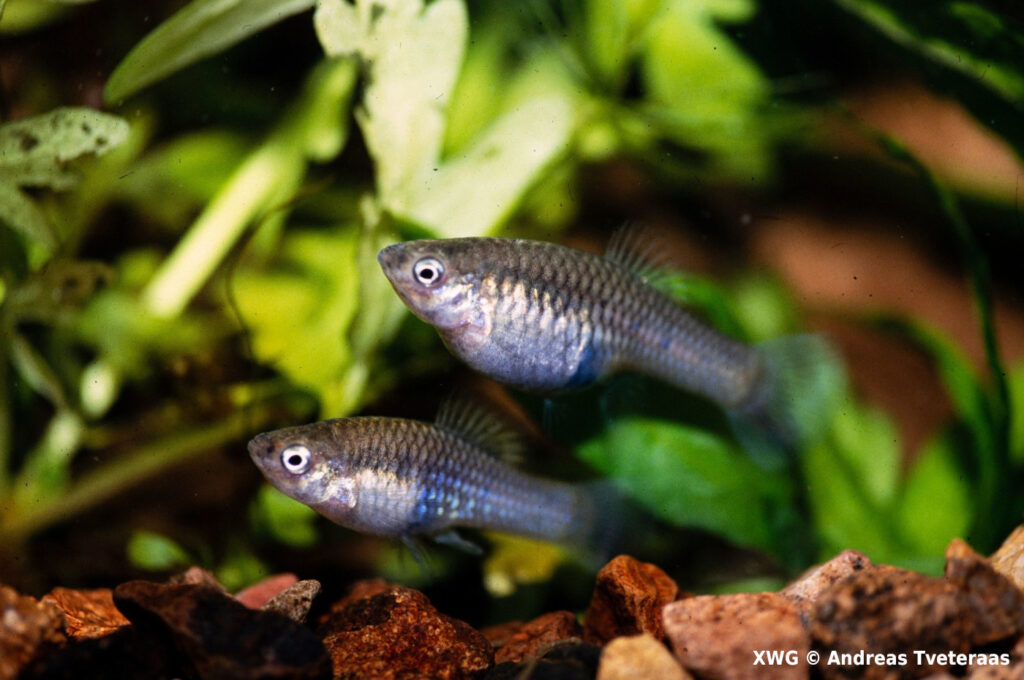
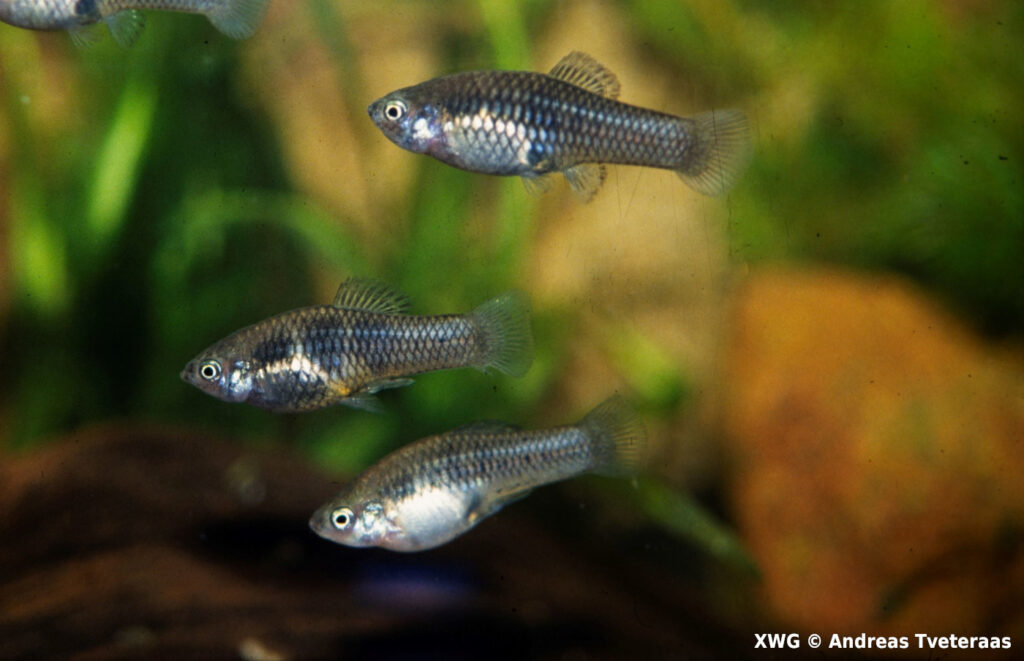

La Cieneguita: Extirpated by sewage discharge
Carlos Aguilera is in charge of the aquarium department at the Natural History Museum of the University of Nuevo Leon, and a good friend from my first stay in Mexico. When I returned to Mexico in September ’94, Carlos offered me a room in his house, where I stayed for seven months. I am extremely grateful to Carlos for his hospitality and friendship.
A few days after my arrival in 1994, Carlos and I made a tour of all the known platyfish habitats in northern Monterrey. One site, La Cieneguita, is only a few hundred meters from Carlos’ home.
A few days before I left Mexico in 1991, we discovered a previously unknown platyfish population here. Platies co-existed with introduced guppies. Carlos had informed me by letter that the population was exterminated by a sewage discharge into the spring in 1993.
When we arrived at the place, the water was clean and full of fish. But our catches showed that there were exclusively guppies in the spring. It is unknown whether these have survived the sewage discharge or whether the species has been reintroduced after the discharge.
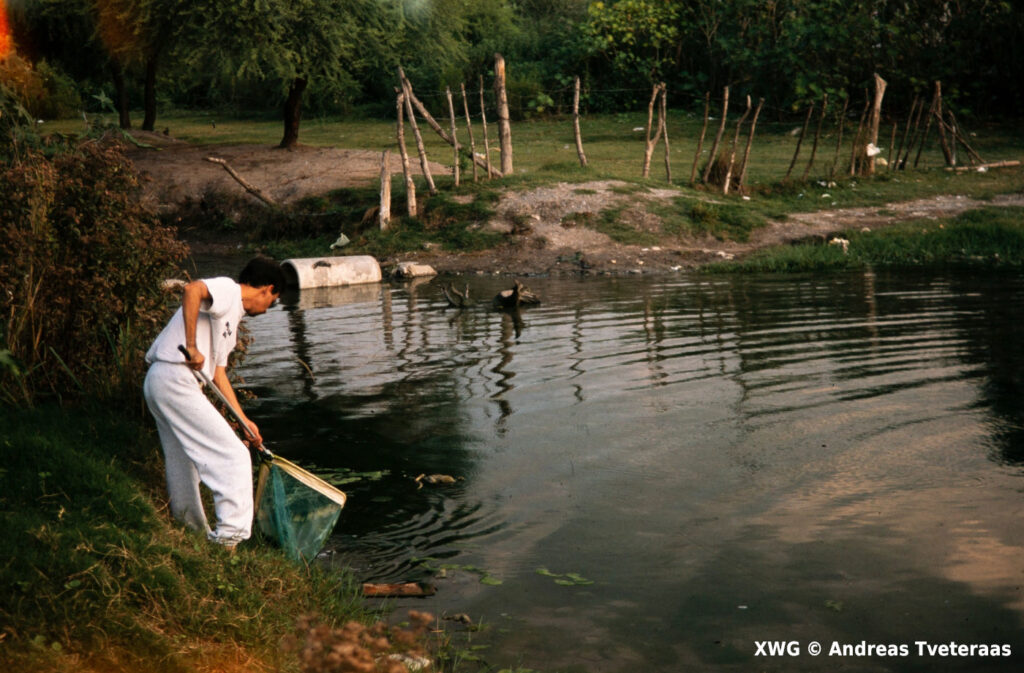
Las Peñitas: Hybridized with swordtails?
The next site on our tour was the spring in the Mezquital, Ojo de las Penitas. The platyfish population in this spring was discovered in 1972. Groundwater seeps up along one bank. The spring is like a green lung in the middle of a residential area.
When I visited the spring in 1991, there were large amounts of rubbish in and around the water. Now a cleanup had been carried out to make the place more attractive. There are still platies in the source, but swordtails (X. hellerii) were introduced into the source many years ago and it is therefore very likely that a certain degree of hybridization has occurred.
We captured platies that apparently looked like normal X. cf. couchianus, but only investigations of their genetic material will be able to reveal whether the population is hybridized.
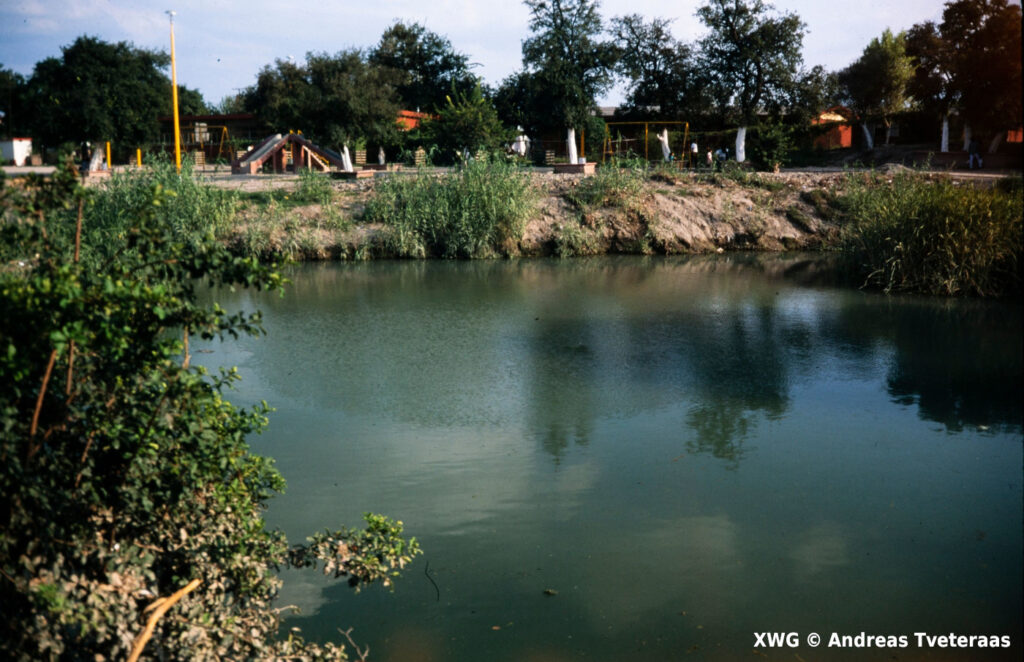
Apodaca: Saved at the last minute
The tour continued to the Apodaca spring, which is the longest known locality for X. cf. couchianus. The platyfish population was discovered in 1961, and almost extinct already in 1962 when a factory wanted to empty its waste water straight into the spring.
Fortunately, the mayor of Apodaca was able to prevent this, and a fence was built around the spring and 200 meters of the river that flows from it. Within this area, swimming pools have been constructed which are supplied with water from the spring, but the main spring itself and approx. 50 meters of its upper course is closed. Apart from a small water pump installed in the spring pond, this biotope is in a fairly intact state.
When we got to Apodaca this time, it turned out that the entire park around the spring was closed, because the bathing season was over. We therefore investigated the continuation of the river course outside the park itself, and were able to ascertain that there were also platies among the submerged vegetation.
This population is therefore still in good condition, although far from safe, as there is an imminent danger of the introduction of alien species into the habitat.

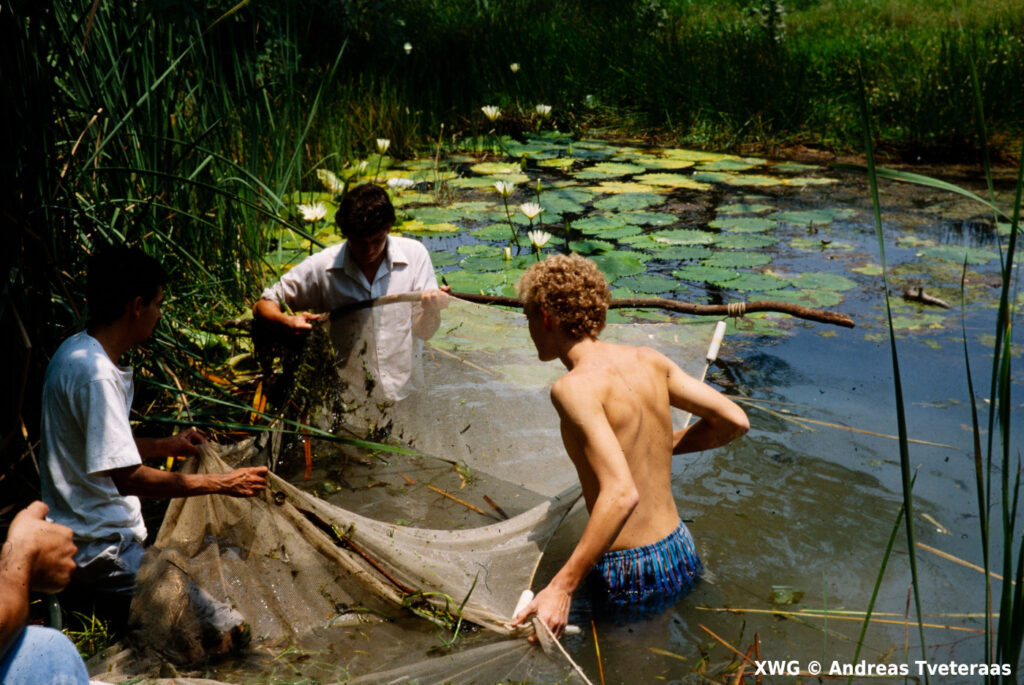
El Infiernillo: Wiped out by wastewater?
Not too far from the Apodaca spring, another spring with a platyfish population was discovered in 1991. Despite the somewhat off-putting name “El Infiernillo” (the little hell), this spring was a beautiful and largely undisturbed platyfish biotope, which gave good hope that the population of X. cf. couchianus would be safe well into the future.
The spring is probably too remote and hidden away, this is the reason why it has not been discovered before.
On our first visit in September ’94, the water in the spring was crystal clear and between 30 and 50 cm deep. On the surface we could see scattered individuals of Gambusia speciosa, and flocks of Astyanax mexicanus swimming around in search of food.
Platies are more shy fish that stay among the vegetation or close to the bottom where they graze on algae and detritus. Their brownish colour means that they almost blend in with the bottom layer, and you have to observe carefully to spot them.
We could ascertain that there was a small, but apparently healthy, population in the source.
After only a few hundred meters of its course, the river from the spring is so polluted by waste water that there is no life in it.
In March ’95 we returned to El Infiernillo to check on the state of the population and were greeted by a sad sight. On the surface of the water floated large patches of white foam, a sign of pollution. A small stream of waste water flowed directly into the spring pond. We could not follow this stream to its source, but we assume that it originated from a nearby farm.
The effect of this contamination at the source was catastrophic. The water had become cloudy and the water level considerably lower. The bottom appeared to have been raised, presumably due to silt backfilling.
In addition, the edge vegetation, consisting of reed plants (Typha sp.), had expanded greatly and overgrown parts of the spring. All of these are signs of an excess of nutrient salts, eutrophication, which is caused by the pollution.
The populations of all fish species was greatly reduced, and we only saw a few scattered platies in the habitat. Unless this pollution ends quickly, I fear that this newly discovered population is already extinct at the time of writing.
A faint hope
No more habitats are known for this platy, but it is not inconceivable that some unknown springs are still hiding in the northern outskirts of Monterrey.
After seeing how quickly the city is expanding beyond this area, I am not optimistic about the future of this platy. On the other hand, it should be mentioned that there has been a certain ecological awareness in Mexico in recent years, and with hard work from conservationists it might be possible to protect platyfish habitats against direct intervention.
Indirect destruction, as a result of a reduced groundwater level and the possibility of the introduction of alien species, still means that no platyfish population in the area can be considered safe.
“America’s Australia”
The situation is not much better for Xiphophorus gordoni, which occurs exclusively in a small system of springs and ponds at the village of Santa Tecla in the southeast part of the Cuatro Ciénegas valley, in the state of Coahuila. This desert valley is often referred to among naturalists as “America’s Australia”, because of the exceptionally high number of specialized and endemic organisms found in the area.
Despite the priceless values this ecosystem represents, it is today threatened with destruction from a number of sides.
Much of the reason for the special conditions in the valley is the presence of countless hot and cold springs, small streams, wetlands and shallow lakes. In this diversity of aquatic habitats, 16 different fish species live, of which 8 are endemic.
Three times I have visited the valley with Mexican friends to study the fish fauna. Much more can be said about this area and its fish, but I will confine myself here to a description of the X. gordoni‘s habitat.
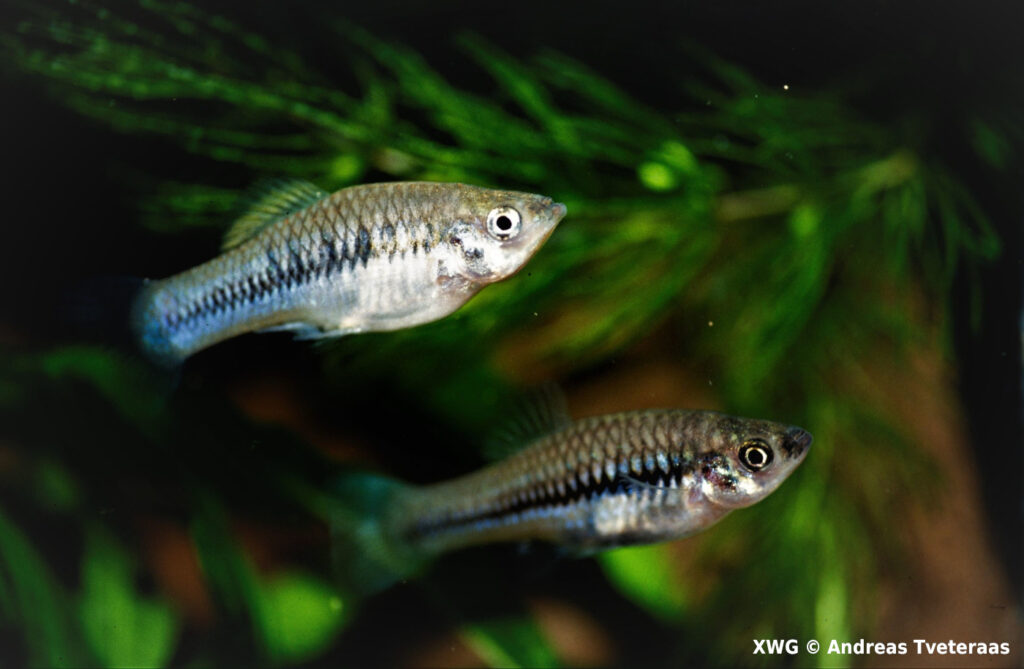
Well camouflaged
The Cuatro Cienegas-platy mainly lives in spring ponds and the small streams that connect these to each other and to the small laguna Santa Tecla. The species does not occur, or at least very sparingly, in the lagoon itself.
This may indicate that it prefers places with some water movement. It is also striking that the species exclusively stays close to the bottom or among aquatic vegetation, we have never observed it in open water. One can see groups of individuals standing and picking in the bottom layer, consisting of fine detritus.
Females and young fish have a light brown body colour, and a darker net pattern on the sides of the body. This colour suit provides good camouflage, and thus presumably good protection against predators.
Males have a somewhat more conspicuous appearance, with a blue sheen on the sides of the body and dark transverse stripes, but the intensity of the colours depends on the mood. If the fish feels threatened, the colours fade quickly.
Along with X. gordoni, Gambusia marshi also occurs, a livebearer found in almost all aquatic habitats in the valley. The species spends all its time close to the surface, waiting for food from above. Other species in the springs are: Astyanax mexicanus, “Cichlasoma” cyanoguttatum and Cyprinella xanthicara.
Sex-discriminating gambusias
The species Gambusia longispinis, which is endemic to the Cuatro Ciénegas valley, does not occur together with X. gordoni, a fact which the American biologist Minckley found very remarkable. The two species are fairly similar in appearance, and he wondered if this could explain the gambusia’s absence.
In laboratory experiments, he studied the partner choice of males of the two species. They found that males of both species preferred to mate with females of X. gordoni when given the choice. This discrimination against the longispinis females means that the species would probably not survive in the company of the platy.
Many threats
After the construction of a canal, the water level in the Santa Tecla system has dropped dramatically. The water is used for irrigation for agriculture in the surrounding desert areas. The former shoreline is clearly visible several meters from today’s shores, and testifies to the system’s former extent. Some of the springs in the system are about to be isolated due to the falling water level. The falling water level also leads to a sharp reduction in the size of suitable habitats for the platy.
In addition, increased human activity and livestock’s use of the spring as a drinking place has led to pollution and destruction of the beach zone.
Water hyacinth, Eichhornia crassipes, has been introduced and covers the surface in large parts of the system, causing shading and reduced water quality.
It is hoped that measures will be implemented to improve the condition of this biotope, after parts of the Cuatro Ciénegas valley were declared a nature reserve in 1994. Concrete plans for this do not exist, however, and time is possibly running out for this platy.
Múzquiz Platy Extinct?
The last of the northern platyfish, Xiphophorus meyeri, is endemic to a spring and the river that flows from it, near the village of Múzquiz in Coahuila, ca. 120 km north of X. gordoni‘s range.
I visited this habitat in June 1991 and it was then in good condition and harbouring a large platyfish population. Unfortunately, I did not have the opportunity to return to Múzquiz during my last stay in Mexico. But Arcadio Valdez, who runs the breeding centre for endangered fish species in Monterrey, has visited the place and was able to say that the platy is probably extinct, as the habitat has dried up due to the village’s water consumption.
The only hope for the species is that there is still a hidden spring or river section with water and platies.
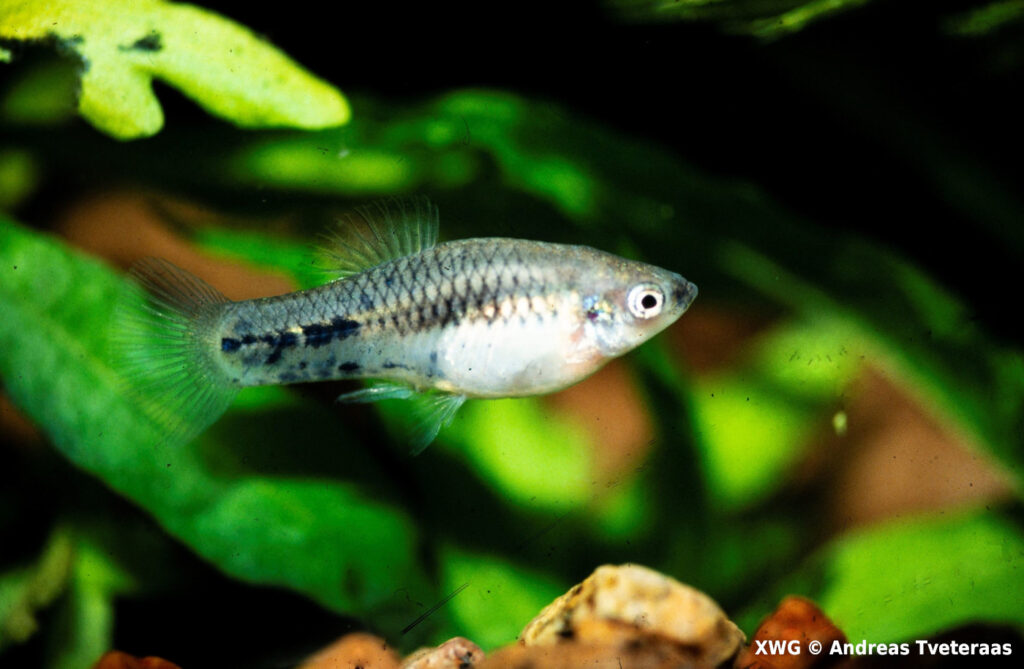
Epilogue 2023
According to my information, the populations of Xiphophorus cf. couchianus are all gone, both in the wild and in captivity. If anyone has different knowledge, please come forward. Nothing would make me more happy than to stand corrected on this!
As far as I know, Xiphophorus meyeri has not been found in the wild after 1993. This species is still maintained in captivity, sometimes even available from commercial wholesalers. The wild population of X. meyeri showed a wide variation of pigmentation, while the current captive population shows mainly bigger black blotches. I fear that significant genetic diversity may have been lost in the captive population.
My latest information is that Xiphophorus gordoni still lives in the springs at Santa Tecla. This information dates back some years, so would be good to hear if someone has recent data on this population.
